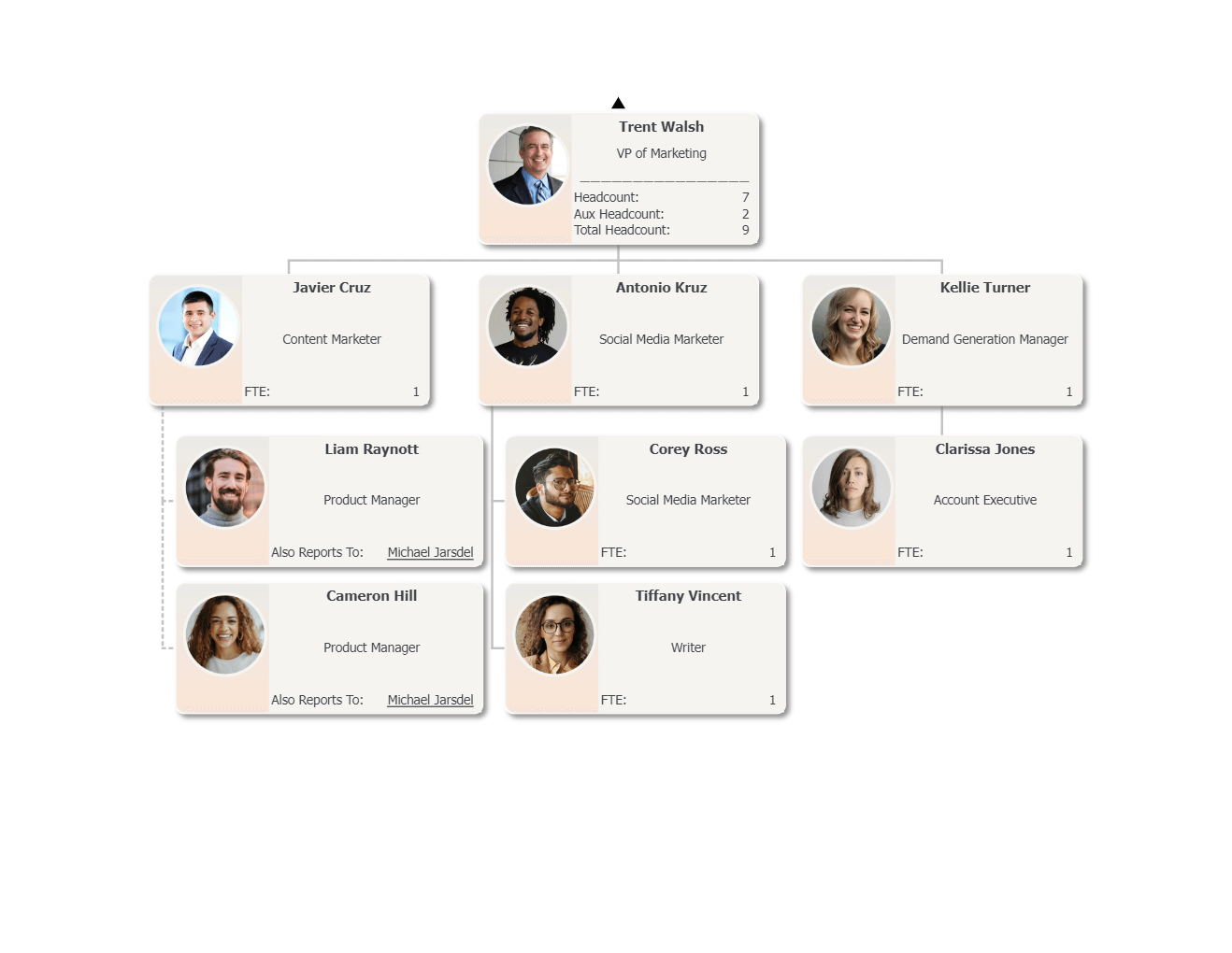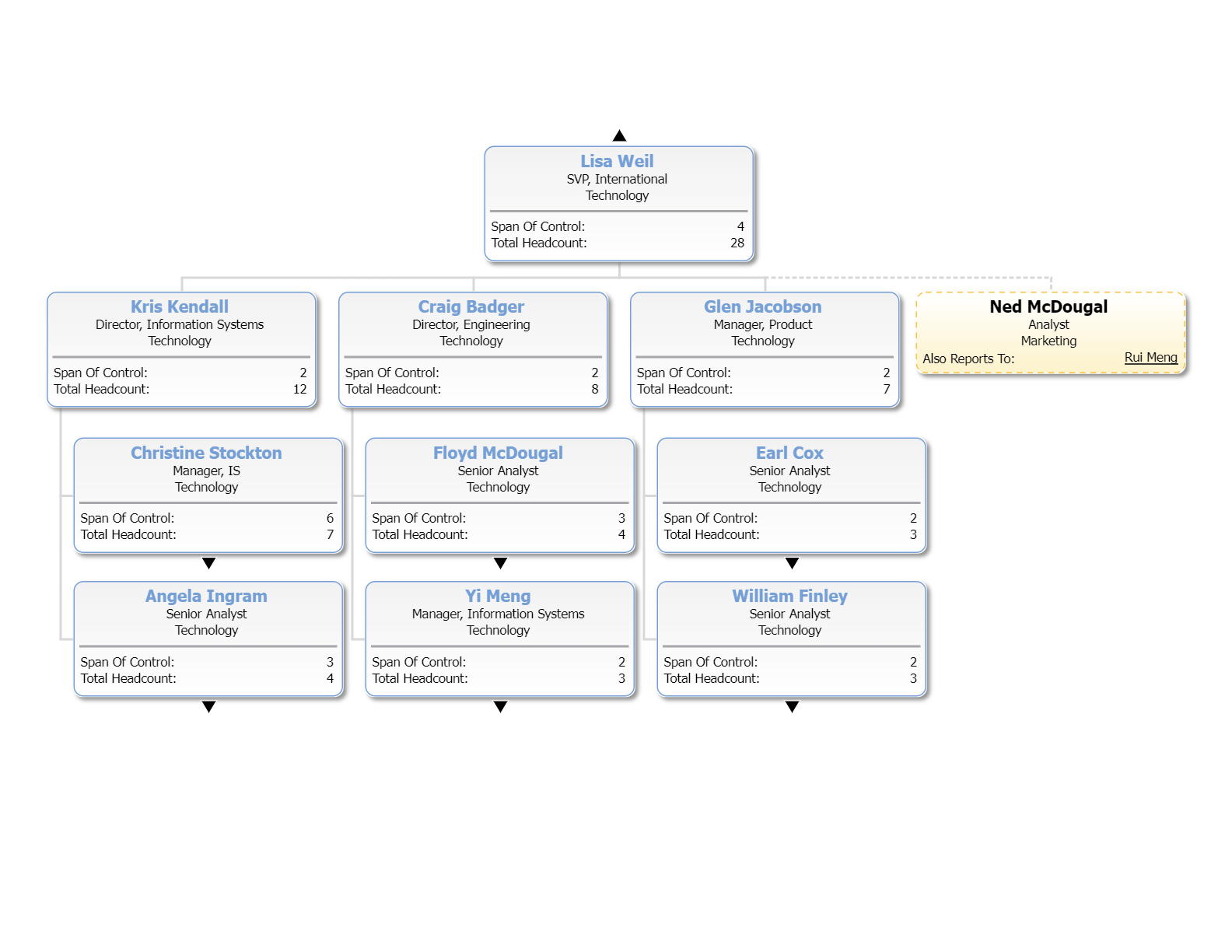June 16, 2021
12:15 AM
By OrgChart Team
In the rapidly evolving landscape of today’s business world, organizational structures are transforming. No longer are companies rigidly adhering to traditional silos such as manufacturing, finance, and sales. Instead, a shift toward more fluid, matrix organizational structures is gaining momentum, driven by a growing need for project-oriented, cross-functional collaboration across multiple geographies and product complexities.
This transition, however, brings its own set of challenges, particularly when it comes to managing dotted-line relationships. In a matrix structure, an employee may report to multiple managers, complicating the dynamics of authority and loyalty. Understanding and effectively managing these intricate relationships is crucial for maintaining efficiency, promoting clear communication, and ensuring a cohesive organizational structure.
The following sections delve into the intricacies of matrix organizational structures, outline the challenges and strategies associated with navigating dotted-line relationships, and offer insights into fostering an environment conducive to productivity and cooperation. We will examine the increasing shift toward matrixed, cross-functional organizations, discuss strategies for handling multiple reporting relationships, and explore ways to motivate team members within this unique organizational context.
Whether you’re a seasoned manager looking for strategies to navigate the complexities of a matrix organization better or you’re new to this organizational model, this guide aims to provide the essential knowledge and tools you’ll need. So, let’s delve into matrix organizational structures and dotted-line relationships and explore how to navigate these effectively for a more harmonious and productive work environment.
Matrix organizational structures are becoming increasingly popular, primarily driven by the need for collaborative, project-oriented work across multiple geographies and product complexities. With OrgChart, managing these intricate relationships and understanding the organizational structure becomes significantly easier.

Traditionally, organizations have functioned within defined silos such as manufacturing, finance, and sales. This linear workflow approach, reminiscent of an auto assembly line or waterfall development process, has been a staple since the industrial revolution. While this method has its benefits, it also presents challenges in fostering cross-functional collaboration.
There’s a noticeable trend toward establishing temporary, cross-functional project teams today. Traditional silo operations often struggle to share joint responsibilities across functional silos. In this evolving landscape, OrgChart proves instrumental in managing the often complex, dotted-line relationships within your organization.
In a matrix organizational structure, relationships can become complicated. For instance, an individual might be temporarily loaned to a project, thereby reporting to two managers. The formal manager, who holds the reins of pay, rewards, and future promotions, often significantly influences the employee’s dedication. Meanwhile, while capable of contributing feedback, the project manager may need more control.
OrgChart aids in visualizing these relationships. A solid line represents the employee’s connection to their formal manager, while a dotted line signifies their auxiliary or project manager.
It’s crucial to document these multiple reporting relationships within the organization and ensure management is privy to this information. Recognizing potentially divided loyalties can help in managing them effectively. Furthermore, clarity on expectations among the employee and managers involved is necessary where a dotted-line relationship exists.

Understanding how to motivate dotted line reports requires knowledge of what rewards are significant to them. Although project managers may need more substantial reward power or authority, they can discover what matters to the team member by interviewing them. While financial rewards might not always be an option, offering opportunities for skill acquisition or leadership roles that align with their career development goals may prove beneficial.
Managing dotted-line employees within a matrix organizational structure demands a unique management approach and the right tools. It’s impossible to control what one cannot see. OrgChart’s workforce planning and organizational charting solution equips managers for success, clearly visualizing a company’s structure and its relationships.
Interested in experiencing how OrgChart can simplify the complexities of your matrix organizational structure? Request an OrgChart demo today!
Tags: